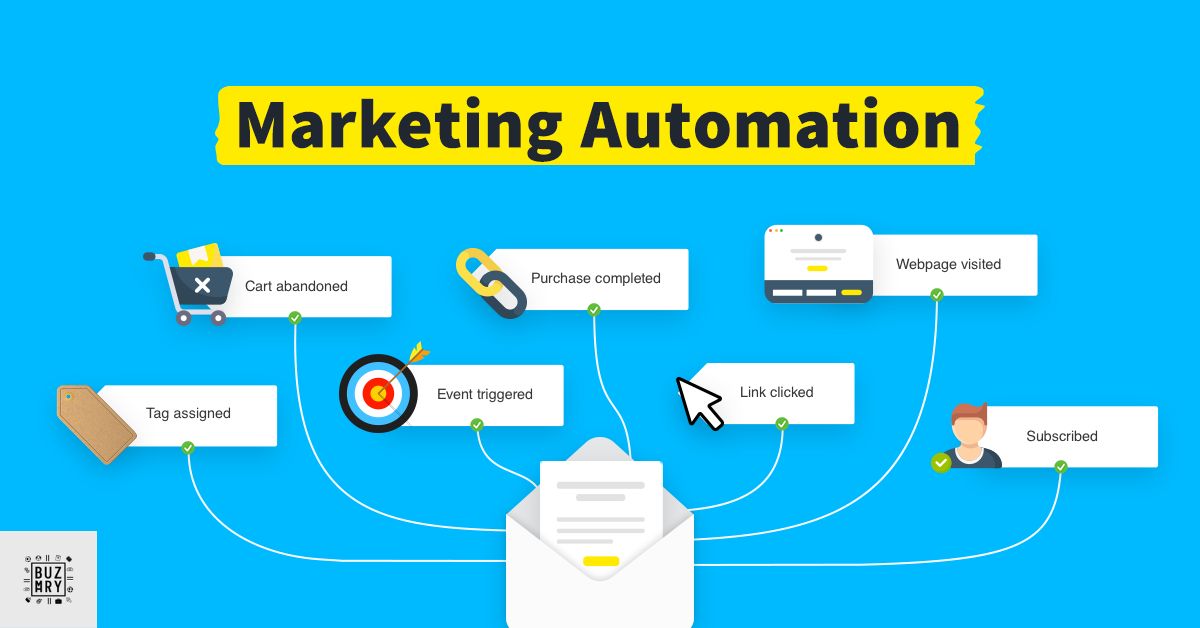As we anticipate, the ways industrial marketing will look in 2024 are evolving. “Industrial Marketing Challenges: Unlike most blogs that only focus on entertainment, “10 Best Practices for 2024” is not afraid to get to the heart of the matter.
Technological changes and new buying behaviors are upturning the applecart. That is why, old marketing strategies do not seem to work today. Today’s buyer expects a personal touch, profound technical understanding, and a smooth online experience.
Yes, I think it is challenging but by no means is it out of reach. These challenges can however be overcome by the use of smart strategies. This guide will reveal to you how you can survive in the new industrial marketing environment.
The Changing Face of Industrial Marketing
Industrial marketing is evolving fast. Digital tools are reshaping how we do business. Social media, big data, and AI are now key players. Companies must adapt or fall behind. Online presence is crucial. Buyers research more before contacting sellers. Personalized content is a must. Video marketing is on the rise. These changes bring challenges, but also new opportunities for smart marketers.
Key Players in the Industrial Marketing Ecosystem

The industrial market has many players. Manufacturers make the products. Distributors get them to buyers. End-users are the final customers. But there’s more. Tech providers offer new tools and platforms. Consultants help navigate the complex landscape. Each player has a role in the marketing process. Success comes from understanding how they all fit together. It’s a team effort in today’s industrial world.
Data Management and Analytics
With huge amounts of customer and market information, it becomes a challenge to manage. There always remains an issue of methodology and formulation of ways in which big data can be analyzed in the most appropriate ways. But this is something important that has to be learned in industrial marketing. With the help of this concept, you can control the flow of data and make the proper decision to leave behind all the competitors. This is one of the Industrial Marketing Challenges you will encounter in 2024.
Market Penetration in Global Markets
It might be a bi-annual event but it’s hard to stand out in today’s flooded global market. It is very much cut-throat at the moment and markets are saturated. There is added complexity when the decisions to be made are on aspects of international marketing.
This in turn requires that you have to come up with differentiation strategies that you will be adopting with your brand. This paper examines these Industrial Marketing Challenges as crucial to the survival of organizations within a competitive market arena.
Industrial Marketing Challenges

Overview of the Approaches for Use 2 Major Challenges in Industrial Marketing for 2024:Industrial marketing is not an easy task in the year 2024 because of challenges that are likely to be encountered. It is challenging to follow the technological advancement. Buyers are more demanding. Competition is fierce.
Budgets are tight. Data overload is real. Recruiting talent is tough, especially ensuring that you get the right talent in the market. Global markets add complexity. They can all at times appear and seem like very pronounced hurdles. But knowing them is the first thing that you must do to achieve success I would say. Now it is time to look at these challenges in detail and figure out how to approach them.
Complex Buying Processes
B2B buying is not simple. It takes time. Many people are involved. Each has a say. There’s lots of research. Meetings drag on. Budgets need approval. Risk is a big concern. Marketers must be patient. They need to nurture leads for months. Building trust is key. It’s a long game, but worth it when the deal closes.
Digital Transformation Hurdles
Going digital is tough for many companies. New tech can be confusing. Old habits die hard. Some staff resist change. Learning curves are steep. Integration with old systems is tricky. Cost is a concern. But staying analog is riskier. The key is to start small. Build confidence. Show wins. Make digital a friend, not a foe.
Content Marketing in a Technical Field
Creating content for tech buyers is challenging. It must be accurate and engaging. Balancing detail with readability is hard. Jargon can confuse. Simplicity can seem shallow. The trick is to know your audience. Use visuals. Break down complex ideas. Tell stories. Make it relevant. Good tech content informs and inspires. It’s possible to be both smart and interesting.024
Embracing Digital Marketing Techniques
That is why digital marketing strategies are now dear personnel. Even for B2B. We don’t go to social media just for leisure. It’s a business tool. LinkedIn is probably one of the richest resources for networking in a specific industry. That is the same reason why SEO is also important for industrial products.
There is no single behavior that is universal but one thing is for certain, people use the internet for research purposes before making the actual purchase. Your website has to be seen or be visible. Learn the digital ropes. Do not think it is very complicated as this is not the case.
Do not wait for a perfect moment or do not wait for all the problems to be solved, start, however, with something small. Your customers are in the digital world and that is why, any business trying to ignore that is very wrong.
Personalization and Account-Based Marketing
One-size-fits-all is out. Personalization is in. To sum up, no account should not be treated as special. As a result, apply all that you know about them. Tailor your message. It is similar to speaking with a person, where one has to control his or her tongue. Data assist in the understanding of needs. Campaigns feel custom-made. For that it takes work, but It pays off. Customers feel valued. These people are much more likely to purchase than my typical consumers. Though, it is quite surprising, it is simply a matter of quality as opposed to quantity.
Thought Leadership and Content Marketing
Be the authority in your line of business. Share what you know. Write helpful articles. Make engaging videos. Host webinars that teach. Show, don’t just tell. Theoretical knowledge is good, as they say, nothing proves worth like experience, and case studies are there to demonstrate that.
Specifically, white papers are more detailed explanations of particular issues. It’s not about selling. It’s about helping. Instead of struggling out on your own, this means that when you give your support, trust results. Sales follow trust. Be patient. Be consistent. Your expertise will shine.
Leveraging Marketing Automation

Marketing automation saves time and effort. It’s like having a tireless assistant. Emails go out on time, every time. Leads get nurtured automatically. You can focus on strategy. The machine handles the routine. But don’t sit and forget. Keep it human. Tweak as you learn. It’s a tool, not a replacement. Use it wisely to grow relationships.
Building Strong Customer Relationships
Customers are not one-time deals. They’re partners. Treat them well. Listen to their needs. Solve their problems. Be there after the sale. Check in regularly. Offer support. Celebrate their wins. It’s about the long game. Happy customers come back. They tell others. It’s cheaper to keep a customer than to find a new one. Build trust. It’s your best asset.
Read This Blog: Greg Kerkvliet: Am American wrestling on the rise
Measuring Success in Industrial Marketing
Knowing if your marketing works is key. But how do you measure it? KPIs are your yardstick. They tell you what’s working and what’s not. Some look at sales. Others track engagement. Pick the ones that matter to you. Don’t just guess. Use data to guide you. It might seem daunting at first. But once you start, you’ll wonder how you managed without it.
Defining Relevant Metrics
Not all numbers matter equally. For industrial marketing, some KPIs are more important. Look at lead quality, not just quantity. Track how long sales take. Measure customer lifetime value. Don’t forget the human side. Surveys can reveal a lot. Balance hard facts with customer feedback. It’s not just about what you can count. It’s about what counts.
Implementing Analytics Tools
Good tools make measuring easier. There are many options out there. Choose ones that fit your needs. Don’t go for the fanciest. Go for what works for you. Make sure they can talk to each other. Data from different sources should come together. It might take time to set up. But it’s worth it. Good analytics turn data into decisions.
Continuous Improvement and Adaptation

The market never stands still. Neither should you. Use what you learn to get better. Look at your data often. See what it’s telling you. If something’s not working, change it. If it’s working, do more of it.
Be ready to shift gears. New trends pop up fast. Don’t be afraid to try new things. But always check if they’re working. Keep learning, keep improving. It’s a journey, not a destination.
Future Trends in Industrial Marketing
Change is coming fast in industrial marketing. We need to be ready. Big data will get bigger. AI will be everywhere. Customers will want more personalized experiences. Digital and physical worlds will blend. Green practices will matter more. It might seem scary, but it’s exciting too.
The key is to stay curious and open. Keep an eye on trends. Be ready to learn and adapt. The future is full of opportunities for those who prepare.
Also Read This Blog: Laura Marie Holtzmann: Age, Height, Weight, Parents, Children and Net Worth
Artificial Intelligence and Machine Learning
AI is not just hype. It’s changing how we work. AI can predict what customers might want. It can score leads automatically. Chatbots can handle simple questions. This frees up time for complex tasks. But AI needs human guidance. It’s a tool, not a replacement. Learn how to use it wisely. Start small and build up. AI can make your marketing smarter and more efficient.
Virtual and Augmented Reality in B2B
VR and AR are not just for games. They’re powerful business tools. Imagine showing a huge machine in a small office. Or training staff without risk. VR and AR make this possible. They bring products to life. Customers can see and “touch” before buying. It’s more than cool tech. It’s about better understanding. It can speed up sales and reduce returns. The future of demos is here.
Sustainability and Green Marketing
Going green is not just nice. It’s necessary. Customers care about the planet. They want eco-friendly products. They look for sustainable practices. Green marketing is about honesty. Show what you’re doing to help. Be clear about your goals. It’s not just about selling. It’s about responsibility. Green practices can save money too. It’s good for business and the earth.
Successful Industrial Marketing Campaigns
Real stories teach us best. Let’s look at companies that won their marketing battles. They faced big challenges. But they found smart solutions. We’ll see what worked for them. We’ll learn from their mistakes too. These stories show that success is possible. They give us ideas we can use. Let’s dive in and see how others solved industrial marketing challenges.
Digital Transformation Success
Meet Company X. They were stuck in old ways. Sales were dropping. They decided to go digital. It wasn’t easy. Marketers trained their team. They rebuilt their website. They started using social media. It paid off. Leads increased. Sales went up. The key was starting small and building up. They showed that even old industries can succeed online.
Content Marketing Excellence
Company Y had a problem. Their products were complex. Customers didn’t understand them. So they started creating helpful content. Marketers made videos explaining their tech. They wrote clear, simple guides. They answered common questions. People started to trust them. Leads grew. Sales followed. They proved that good content builds business in tech fields.
Global Market Expansion
Company Z wanted to go global. But each country was different. They did their homework. They learned local customs. Marketers adapted their message for each place. They found good partners. They used local social media. It wasn’t quick or easy. But it worked. They now sell worldwide. Their story shows that going global is possible with careful planning.
Conclusion
The niche of industrial marketing in 2024 seems to be characterized by a great number of challenges but at the same time, it is filled with opportunities. “Industrial Marketing Challenges: As the mnemonic “Best Practices for 2024” has revealed to us, it is the winners who acquiesce in change.
This is how individualized and digital marketing, as well as data-driven approaches, can jump over traditional barriers. The future is therefore with the marketers who take up positions on the technological frontiers, who are behind the production of quality content, and who effectively manage customer relationships.
As mentioned before, it is important to always bear in mind that the industrial picture changes all the time. Be curious, keep on learning, and be prepared to change. Thus, by applying the best practices described above and remaining flexible, one can transform potential problems into opportunities for development and effective industrial marketing.
Frequently Asked QUESTION
what the most difficult aspect of launching the marketing campaign?
The most important issue of marketing is the constant issue of obsolescence of marketing tools and techniques. The technological advancements are rather fast and the consumers rotate even faster, making marketers to always change strategies.
What are the considerations of industrial marketing?
The B2B marketing in specifically industrial marketing is challenging and needs detailed knowledge of the buyer’s needs and purchasing criteria, technical details, and the time-consuming buying process.
What are the challenges in product marketing?
Marketing of products requires overcoming key difficulties such as product differentiation, communicating the value proposition, and positioning of products to meet customers’ needs. Marketers also have the challenge of having to manage the change that occurs in the marketing environment and the marketing technologies.
What are the strategies for industrial marketing?
Some of the best practices for industrial marketing include content marketing, data-driven marketing, and customer relations. Some of the other main strategies include; Creating a digital enabling environment for the marketing strategies. Personalised marketing to the potential customers Coordinating itself with the sales department in the organizations.
What are the four types of marketing strategies?
The four marketing strategies are market penetration, market development, product development, and diversification. All the strategies aim to enable companies to increase their revenues either by venturing into new markets, introducing new goods and services, or improving their present products and services.
What are the seven marketing strategies?
It has often been described as the 4P model, which consists of product, price, place, and promotion. These strategies are the basis of what is known as a marketing mix which makes sure that all the aspects of marketing are well covered.
As the admin of Buzsmarty.com, I bring a passion for Business, Travel, Entertainment, and Sports. My goal is to deliver fresh insights and updates, helping readers stay informed and entertained. With a keen eye for trends and a commitment to quality content, I strive to make Buzsmarty.com a go-to destination for diverse interests.



